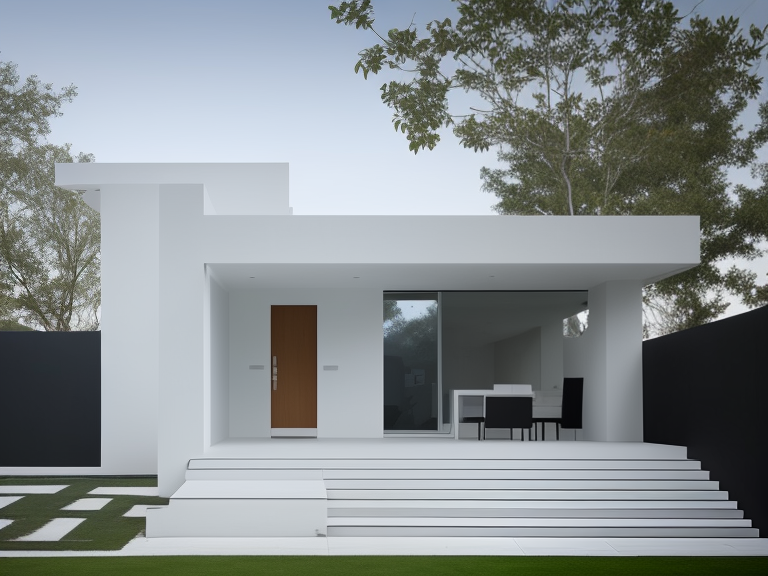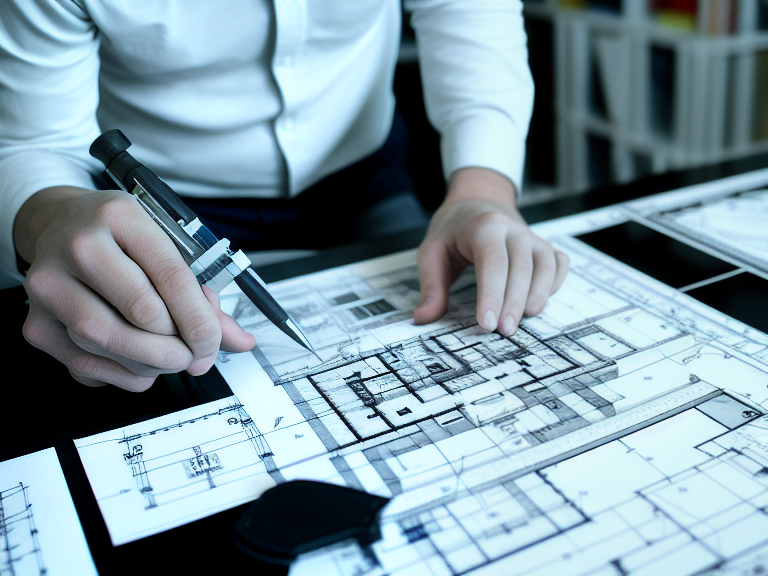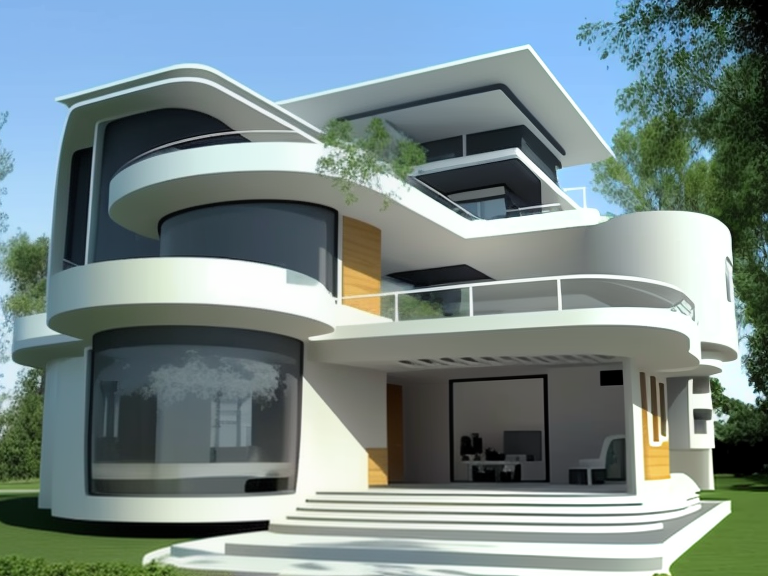Minimalist design in residential architecture is rooted in the pursuit of simplicity, stripping away unnecessary embellishments to reveal the elegance and functionality of clean lines, organic forms, and natural light. This design approach creates a sense of serenity, calm, and mental clarity, promoting emotional calm and better sleep quality. By incorporating clean lines, efficient room allocation, and negative space, minimalist design prioritizes functionality and aesthetic appeal. As we explore the intersection of form and function, we uncover the beauty of minimalist design in creating powerful, elegant, and culturally relevant living spaces that redefine the essence of modern living, and the journey has only just begun.
Embracing Simplicity in Home Design
By stripping away unnecessary embellishments and focusing on clean lines, minimal ornamentation, and an emphasis on functionality, homeowners can create a sense of serenity and calm in their living spaces. This intentional design approach allows for a more streamlined and clutter-free environment, conducive to mental clarity and personal freedom. Minimalist design principles enable individuals to break free from the constraints of material possessions, embracing a lifestyle that values simplicity and intentionality.
Embracing simplicity in home design is not about sacrificing aesthetics, but rather about creating a space that serves as a reflection of one's values and priorities. By eliminating unnecessary elements, homeowners can redirect their attention towards the aspects of their lives that truly matter. This shift in focus enables individuals to cultivate a deeper sense of personal freedom, unencumbered by the burdens of material possessions.
Intentional living is at the heart of minimalist design, encouraging individuals to reevaluate their relationship with their living spaces and the objects that inhabit them. By adopting a more pared-back approach to design, homeowners can create an environment that fosters a sense of calm, clarity, and purpose. As a result, they can live more intentionally, free from the distractions of a cluttered and chaotic environment, and focused on the aspects of life that bring true fulfillment.
The Psychology of Minimalist Spaces
Research has consistently shown that minimalist spaces have a profound impact on our mental and emotional well-being, influencing everything from our stress levels and mood to our cognitive function and overall sense of calm. By eliminating visual clutter and distractions, minimalist spaces create an environment conducive to Mental Clarity, allowing individuals to focus and think more clearly. This, in turn, can lead to improved productivity, creativity, and problem-solving skills.
| Benefit | Description |
|---|---|
| Reduced Stress | Minimalist spaces reduce visual stimuli, leading to a decrease in stress levels and anxiety. |
| Improved Focus | Clutter-free environments improve concentration and mental clarity, allowing for more efficient work and study habits. |
| Enhanced Creativity | Uncluttered spaces foster creativity, as the brain is free to explore new ideas without distraction. |
| Emotional Calm | Minimalist spaces promote a sense of calm, reducing feelings of anxiety and overwhelm. |
| Better Sleep | A clutter-free bedroom can lead to improved sleep quality, as a peaceful environment promotes relaxation. |
The psychology of minimalist spaces is rooted in the understanding that our surroundings have a profound impact on our mental and emotional states. By embracing minimalism, individuals can cultivate a sense of Emotional Calm, leading to improved overall well-being. By incorporating minimalist design principles into residential architecture, homeowners can create spaces that not only look aesthetically pleasing but also promote a healthier, happier way of living.
Clean Lines and Organic Forms
In the domain of minimalist design, the intentional use of clean lines and organic forms serves as a visual language, conveying a sense of serenity and sophistication in residential architecture. This harmonious blend of geometric and curved silhouettes creates a visual narrative that resonates with those who inhabit these spaces.
Clean lines, often characterized by minimal ornamentation and an emphasis on function, provide a sense of clarity and simplicity. They serve as a canvas for the introduction of organic forms, which inject a sense of fluidity and dynamism into the design. The interplay between these two elements fosters a visually striking dialogue, where geometric nuances subtly underscore the beauty of curved silhouettes.
The incorporation of organic forms adds a layer of emotional depth to the design, as they evoke a sense of natural, effortless elegance. These curved silhouettes can take many forms, from sweeping archways to undulating rooflines, each contributing to a sense of fluid continuity. By juxtaposing clean lines with organic forms, designers can craft spaces that exude a sense of refined sophistication, while still maintaining a deep connection to the natural world. This balance of opposing forces results in a truly innovative and enchanting visual language, one that redefines the boundaries of minimalist design in residential architecture.
The Role of Natural Light
Beyond the deliberate interplay of clean lines and organic forms, the strategic manipulation of natural light emerges as an essential element in minimalist design, subtly transforming the ambiance and functionality of residential spaces. By harnessing the power of daylight, architects and designers can create spaces that are not only visually striking but also energy-efficient and sustainable. This approach, known as daylight harvesting, involves carefully orienting windows, skylights, and clerestory windows to maximize natural illumination, reducing the need for artificial lighting during the day.
In minimalist design, the emphasis is on simplicity and subtlety, and the use of natural light achieves this goal by creating a sense of airiness and openness. By minimizing the need for artificial illumination, designers can reduce visual clutter and create a more serene, calming atmosphere. However, artificial lighting is still necessary in the evenings or on cloudy days, and a thoughtful approach to artificial illumination can enhance the ambiance of a space without compromising the minimalist aesthetic. By balancing natural and artificial light, designers can create residential spaces that are not only beautiful but also functional, sustainable, and conducive to well-being.
Functional Simplicity in Layout
In minimalist residential architecture, functional simplicity in layout is achieved through thoughtful spatial planning. By adopting open floor planning, efficient room allocation, and streamlined traffic flow, designers can create spaces that are both aesthetically pleasing and highly functional. These design elements work in harmony to foster a sense of calm and clarity, while also promoting ease of movement and interaction. In addition, incorporating natural light and multifunctional furniture enhances both the practicality and visual appeal of minimalist interiors. By integrating innovative ideas for urban spaces, architects can optimize limited square footage while maintaining openness and comfort. This approach ensures that even compact homes feel spacious and inviting, reinforcing the core principles of minimalist design.
Open Floor Planning
By eliminating traditional compartmentalization, open floor planning revolutionizes residential architecture by creating a seamless, airy atmosphere that fosters social interaction and visual flow. This design approach dissolves boundaries between living, dining, and kitchen areas, merging them into a fluid, multi-functional space. The result is a more spacious and inviting environment that encourages socializing and connection among occupants.
Open floor planning also enables the creation of flexible layouts, where social zones can be adaptably defined and redefined as needed. For instance, a large, open-plan living area can be divided into cozy nooks and conversational areas, facilitating both intimate gatherings and lively parties. This adaptability allows residents to shape their living space according to their changing needs and lifestyles, making open floor planning an attractive feature of minimalist design. By dissolving spatial boundaries, open floor planning creates a sense of freedom and flexibility, allowing occupants to live, work, and socialize in harmony with their surroundings.
Efficient Room Allocation
Three fundamental principles underlie efficient room allocation in minimalist design: strategic placement of functional zones, careful consideration of circulation pathways, and thoughtful integration of storage solutions. By applying these principles, architects can create spaces that optimize functionality while minimizing clutter and visual noise. This approach enables residents to navigate their living spaces with ease, unhindered by unnecessary obstacles or distractions.
Efficient room allocation is critical in minimalist design, as it enables the creation of a harmonious Room Hierarchy. By prioritizing essential functions and allocating space accordingly, architects can create a sense of balance and proportion. This, in turn, allows for Space Optimization, where every square foot is utilized to its fullest potential. By streamlining the layout and eliminating unnecessary features, residents can enjoy a more streamlined, clutter-free living environment that promotes relaxation and well-being. By embracing functional simplicity, architects can craft spaces that are both aesthetically pleasing and highly functional, ultimately redefining the notion of minimalist living.
Streamlined Traffic Flow
Optimizing traffic flow through thoughtful layout design enables a seamless passage between functional zones, fostering a sense of fluidity and ease of movement throughout the living space. A well-designed layout is essential in minimalist residential architecture, as it allows inhabitants to navigate the space with ease, free from clutter and obstacles. Corridor optimization is a key aspect of streamlined traffic flow, where careful planning guarantees that circulation spaces are efficient and unobstructed. This can be achieved through the strategic placement of doors, windows, and other architectural features that might otherwise disrupt the flow.
Pathway routing is another essential consideration, as it dictates the natural flow of movement within the space. By designing pathways that are intuitive and logical, inhabitants can move effortlessly between functional zones, such as from the kitchen to the dining area. A well-designed pathway routing system also helps to reduce congestion and bottlenecks, creating a sense of calm and serenity within the living space. By prioritizing streamlined traffic flow, minimalist residential architecture can create a seamless and efficient living experience that enhances the overall quality of life.
The Beauty of Negative Space
In the pursuit of minimalist design, the intentional incorporation of negative space is an essential element, as it imbues residential architecture with a sense of breathability, visual calm, and subtle sophistication. By thoughtfully allocating empty spaces, architects can create a sense of Visual Silence, where the absence of clutter and ornamentation allows the eye to rest and the mind to unwind. This deliberate use of negative space enables the creation of Empty Frames, where the boundaries between interior and exterior spaces are blurred, and the surrounding landscape becomes an integral part of the design.
The beauty of negative space lies in its ability to redefine the relationship between function and aesthetics. By stripping away unnecessary elements, the focus shifts from ornate details to the essence of the space itself. This reduction to essentials allows the true character of the architecture to emerge, revealing a profound simplicity that is both elegant and powerful.
In minimalist residential design, negative space is not just an absence of clutter, but a deliberate design choice that elevates the overall aesthetic. By embracing the beauty of negative space, architects can craft living spaces that are at once serene, sophisticated, and deeply connected to their surroundings. As a result, residents can experience a deeper sense of calm, clarity, and well-being, fully immersed in the tranquility of their surroundings.
Sustainable Living Through Design
As we explore sustainable living through design, it becomes evident that intentional material selection and clever spatial planning can greatly reduce the environmental footprint of a residence. The strategic incorporation of green building materials, for instance, can minimize the depletion of natural resources and reduce waste. By optimizing energy efficiency and implementing waste reduction strategies, minimalist design can become a powerful tool for fostering eco-friendly living.
Green Building Materials
Sustainable design's primary focus on reducing environmental footprint has led to a surge in the development of innovative, eco-friendly building materials that not only minimize waste but also promote a healthier indoor environment. The shift towards green building materials is revolutionizing the construction industry, offering homeowners a chance to reduce their carbon footprint without compromising on aesthetics.
One such material gaining popularity is Recycled Concrete, a sustainable alternative to traditional concrete. By utilizing recycled aggregates, this material reduces the need for virgin materials, minimizing waste and conserving natural resources. Another innovative material is Sustaina Wood, a durable and eco-friendly alternative to traditional wood products. Made from reclaimed wood fibers, Sustaina Wood offers a sustainable solution for builders and homeowners alike.
These cutting-edge materials not only benefit the environment but also provide a healthier living space for occupants. By incorporating green building materials into residential design, architects and builders can create homes that are not only environmentally sustainable but also promote a healthier indoor environment. As the demand for eco-friendly materials continues to grow, innovative solutions like Recycled Concrete and Sustaina Wood are paving the way for a more sustainable future in residential architecture.
Energy Efficiency Gains
Building on the foundation of eco-friendly materials, architects are now leveraging design elements to maximize energy efficiency, thereby minimizing a home's reliance on non-renewable energy sources. One key strategy is the incorporation of Smart Insulation, which adapts to changing environmental conditions to optimize heat retention and reduce energy loss. This innovative approach enables homes to maintain a consistent temperature, reducing the need for excessive heating and cooling.
In addition to advanced insulation, architects are integrating Renewable Systems into their designs. Solar panels, wind turbines, and geothermal energy systems are being seamlessly integrated into building envelopes, providing a clean and sustainable source of power. These systems not only reduce a home's carbon footprint but also offer a reliable and cost-effective alternative to traditional energy sources. By combining these cutting-edge technologies, architects can create homes that are not only environmentally sustainable but also highly efficient and cost-effective. As the demand for sustainable living continues to grow, these innovative design elements are poised to revolutionize the residential architecture landscape.
Waste Reduction Strategies
Every aspect of residential design is being reimagined to minimize waste, from optimizing floor plans to reduce construction waste to incorporating recycling facilities that encourage responsible disposal practices. Waste reduction strategies are essential in achieving sustainable living through design. Implementing recycling incentives, conducting regular waste audits, and promoting supply chain transparency are vital steps towards minimizing waste. Material optimization and designing for disassembly enable the reuse and recycling of materials, reducing the need for new resources. This approach fosters circular economies, where waste becomes a valuable resource. Additionally, incorporating refurbishment options extends the life of buildings and reduces the demand for new construction materials. By adopting these strategies, architects and designers can significantly reduce waste and promote sustainable living. As the built environment continues to evolve, embracing waste reduction strategies will be instrumental in creating a more sustainable future.
The Intersection of Form and Function
In the domain of minimalist design, the harmonious balance between aesthetic appeal and functional efficiency is paramount, as it enables the creation of spaces that are both visually striking and highly livable. This delicate balance is essential, as it allows architects to craft residences that not only exude a sense of sophistication but also provide ideal functionality.
The intersection of form and function is where minimalist design truly shines. By stripping away unnecessary embellishments, designers can focus on creating spaces that are both culturally relevant and structurally sound. This approach guarantees that the final product is not only visually stunning but also meets the needs of its inhabitants. For instance, a minimalist residence that incorporates large windows and sliding glass doors can seamlessly blend indoor and outdoor living, creating a sense of fluidity and connection to nature.
Moreover, the emphasis on functional efficiency in minimalist design ensures that every element serves a purpose, eliminating unnecessary features that can compromise structural integrity. This focus on simplicity and functionality results in residences that are not only visually striking but also sustainable, efficient, and highly livable. By marrying form and function, architects can create minimalist masterpieces that redefine the boundaries of residential architecture.
Bringing the Outdoors Inwards
As the boundaries between indoor and outdoor spaces become increasingly blurred, minimalist design pioneers a new era of residential architecture that seamlessly integrates nature into the home. This fusion of natural and built environments is a hallmark of biophilic design, which seeks to reconnect humans with the natural world. By incorporating elements of nature into the home, architects can create a sense of harmony and balance between the built environment and the surrounding natural habitats.
In minimalist design, this integration is achieved through the use of large windows, sliding glass doors, and open floor plans that dissolve the boundaries between indoors and outdoors. The result is a smooth shift between the two, allowing natural light and ventilation to flood the interior spaces. This not only enhances the aesthetic appeal of the home but also promotes a sense of well-being and connection to nature.
Frequently Asked Questions
Can Minimalist Design Be Combined With Luxurious Materials and Finishes?
Can luxurious materials and finishes coexist with minimalist design? Absolutely. This synergy, dubbed "Luxury Fusion," achieves Material Harmony by balancing opulence with restraint. Rich textures, metallic accents, and rare stones can elevate a space while maintaining a clean, uncluttered aesthetic. By thoughtfully integrating lavish elements, designers can create a sophisticated, refined atmosphere that whispers luxury, rather than screaming it.
How Do I Balance Minimalism With the Need for Personal Expression?
Balancing minimalism with personal expression requires a thoughtful approach. To incorporate personal quirks while maintaining a minimalist aesthetic, focus on subtle, intentional design elements that evoke an emotional connection. This can be achieved through carefully selected artwork, unique accessories, or bespoke furniture pieces that reflect your personality. By doing so, you'll create a space that not only exudes simplicity but also tells a story about who you are.
Are Minimalist Homes Suitable for Families With Young Children?
Consider the Smith family, who effortlessly merged minimalism with family life in their Scandinavian-inspired home. By incorporating playful storage solutions, such as hidden compartments and multi-functional furniture, they created a clutter-free environment that promoted creativity and imagination. Kid-friendly textiles, like durable, stain-resistant fabrics, guaranteed the space remained both stylish and practical. This harmonious balance shows that minimalist homes can indeed be suitable for families with young children, fostering a sense of freedom and exploration.
Can I Incorporate Bold Colors Into a Minimalist Design?
Incorporating bold colors into a minimalist design is achievable through strategic color blocking and accent walls. By confining vibrant hues to specific areas, the overall aesthetic remains calm and uncluttered. Accent walls, in particular, provide an opportunity to introduce bold colors without overwhelming the space. By balancing bold accents with neutral backgrounds, a harmonious and visually appealing space is created, perfect for those who crave both minimalism and vibrant personality.
Will a Minimalist Design Make My Home Feel Cold and Uninviting?
The paradox of minimalist design: stripping away the superfluous, only to risk creating a space that feels, well, bare. But fear not, for a well-crafted minimalist space can exude warmth and coziness. Incorporate cozy textures like plush rugs, soft linens, and natural materials to create a inviting atmosphere. Warm accents, such as rich wood tones and subtle lighting, can also add depth and character to the space, debunking the myth that minimalism equals coldness.



